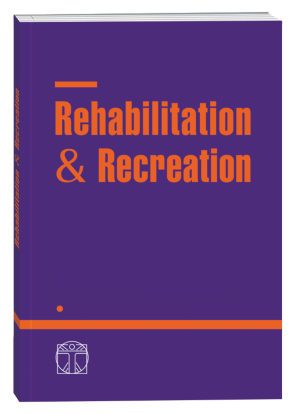DEVELOPMENT OF COORDINATION ABILITIES OF CHILDREN OF YOUNGER SCHOOL AGE
DOI:
https://doi.org/10.32782/2522-1795.2022.13.16Keywords:
coordination abilities, development, children, motor activity.Abstract
In the article, we analyzed the main aspects of the development of coordination abilities in children of primary school age. We considered the peculiarities of the manifestation of coordination abilities and the factors that determine them, also determined the main principles of the development of coordination abilities in the process of physical culture, highlighted the classification of coordination abilities. In the course of the work, it was found that exercises for the development of coordination abilities should be used in each lesson, in a certain ratio, starting from the introductory part, paying attention to their harmonious combination with exercises aimed at the development of children's motor skills. One of the most important tasks of physical education of preschool children is the development of motor function and the ability to control their movements. The coordination abilities of the child perform an important function in the control of movements, namely the coordination and arrangement of various motor movements into a single entity in accordance with the task. Well-developed coordination skills are a necessary prerequisite for successful learning of physical exercises. It is necessary to develop the coordination of younger schoolchildren in various forms of classes. As a certain level is reached, the exercises must be made more difficult and updated so that the element of novelty remains. It was determined that experts recommend using musical accompaniment and game activities with younger schoolchildren during motor actions. Game activity puts forward certain requirements for the manifestation of sensorimotor reactions, information processing, thinking, and attention. The use of various exercises and methods of game direction in the educational process will make classes more interesting, develop children's independence and initiative, courage and determination, endurance and perseverance. Therefore, mobile games and relay races are the most effective and accessible means of developing the coordination abilities of younger schoolchildren.
References
Альошина А.І., Бичук О.І. Розвиток координаційних здібностей молодших школярів у процесі адаптивного фізичного виховання. Фізичне виховання, спорт і культура здоров’я у сучасному суспільстві. 2015. № 3. 88-91
Аксьонова, О.П., Кириленко, Л.В. Школа компетентностей на уроках з фізичної культури в початкових класах. Науковий часопис НПУ імені М. П. Драгоманова. 2018. № 3 (97). 25-32.
Блажко Ю.А. Активізація рухової діяльності учнів на уроках фізичної культури. Перспективи, проблеми та наявні здобутки розвитку фізичної культури і спорту в Україні. Вінниця. 2019. № 2. 21-2.
Куц О.С. Невирішені проблеми фізичного виховання школярів на перехресті віків. Теорія і методика фізичного виховання та спорту. 2002. № 2. 14-15.
Пангелова Н.Є., Харіна Д.Л. Аналіз наукових досліджень проблем фізичного виховання дітей раннього і дошкільного віку. Теорія і методика фізичного виховання і спорту. 2013. № 3. 76-81.
Рибалко Л.М. Методика розвитку фізичних якостей в учнів молодшого шкільного віку засобами рухливих ігор. Вісник Луганського національного університету імені Тараса Шевченка. 2021. № 2(340). 240-251
Скалій Т.В. Педагогічний контроль розвитку координаційних здібностей дітей і підлітків. Фізична культура, фізичне виховання різних груп населення. Харків, 2006. № 6. 22-26.
Томенко О.А. Рівень рухової активності школярів та шляхи його підвищення в умовах загальноосвітньої школи. Педагогіка, психологія та медико-біологічні проблеми фізичного виховання і спорту. Харків. 2008. № 2. 141-146.
Downloads
Published
How to Cite
Issue
Section
License

This work is licensed under a Creative Commons Attribution-NonCommercial-NoDerivatives 4.0 International License.











